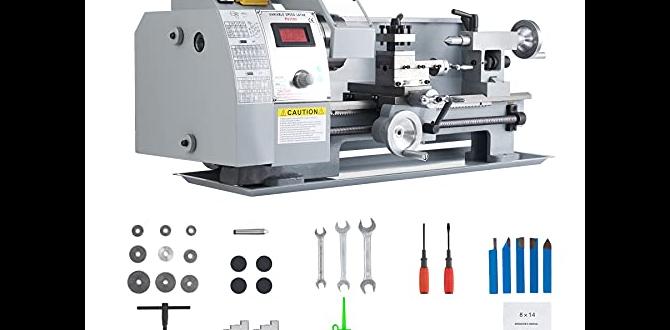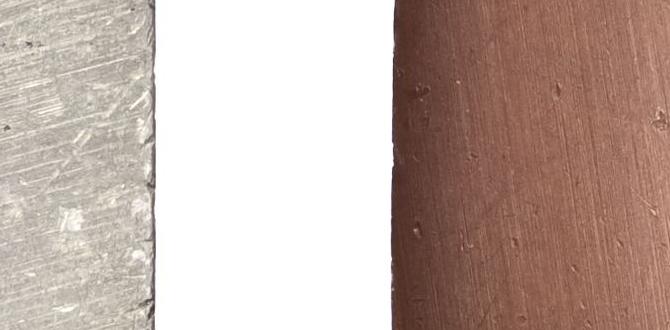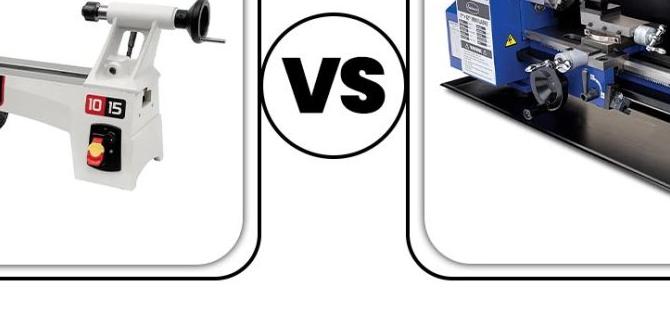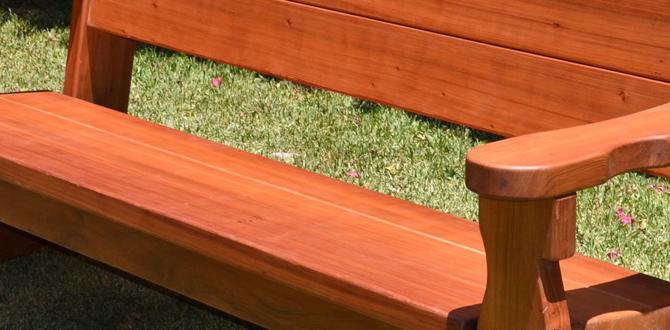A drill lathe is versatile and useful in many workshops and garages. It combines a drill press and a lathe, allowing you to perform drilling and turning operations in one compact machine.
With its ability to handle both tasks, a drill lathe is a valuable addition to any DIY enthusiast or professional woodworker’s collection of tools. Here, we will explore how to make a drill lathe and its many benefits.
Whether you are a beginner or an experienced craftsman, understanding how to make use of a drill lathe can greatly enhance your woodworking projects. So, let us dive into the world of drill lathes and discover how this tool can revolutionize how you work with wood.
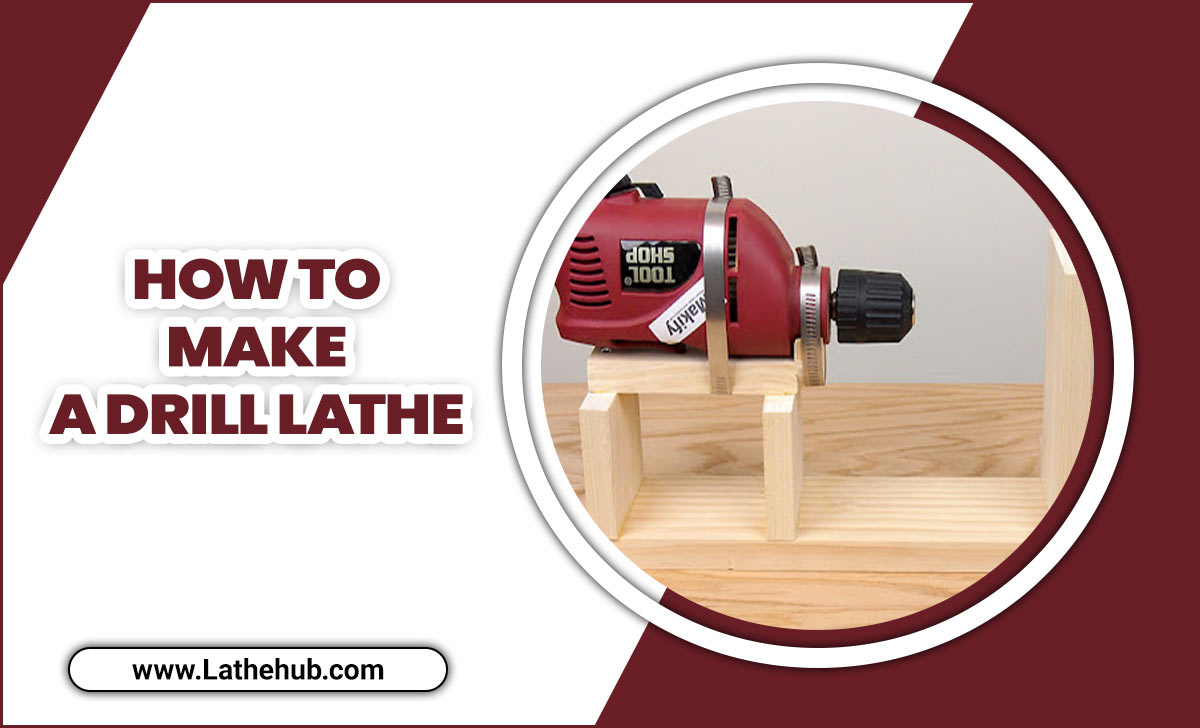
What Is A Drill Lathe?
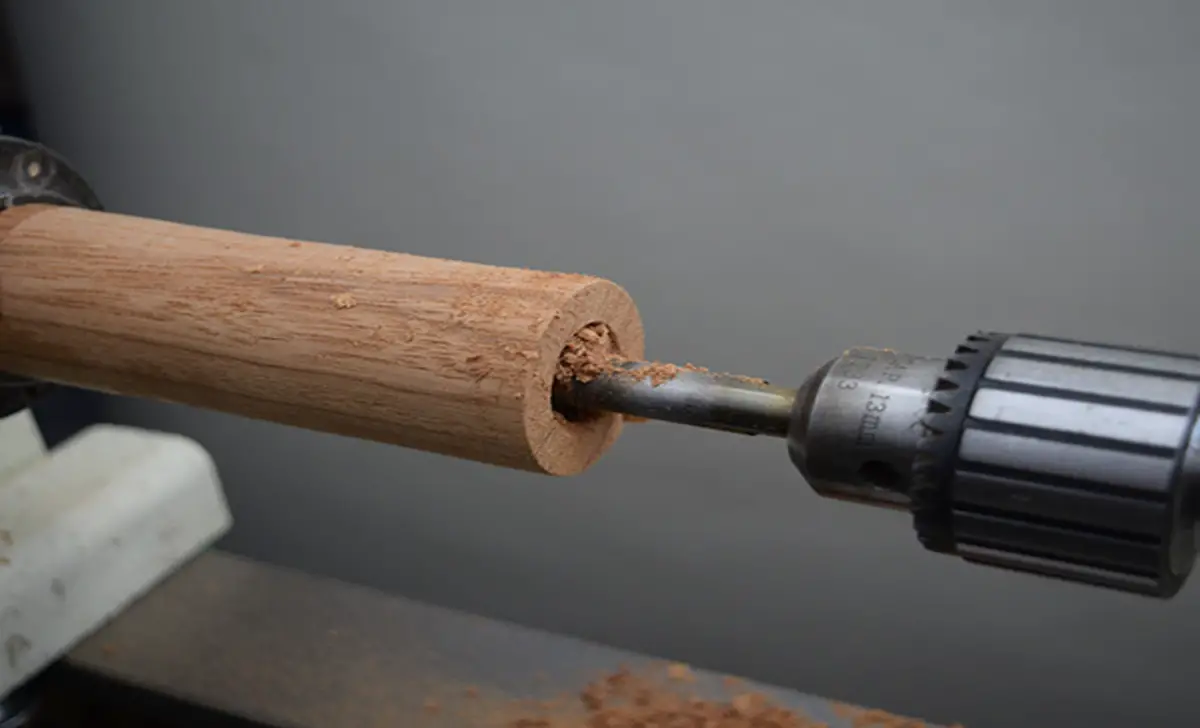
Before we dive into the details of building a drill lathe, let’s first understand what it is. A drill lathe is a woodworking tool that combines the functionality of a drill press and a lathe. It allows you to turn wood, meaning you can shape and hollow out wood to create items like bowls, vases, spindles, and more. Unlike a traditional lathe with its own motor, a drill lathe uses a hand drill as its power source. This makes it a more affordable and portable option for woodworking enthusiasts.
Materials And Tools Needed For The Project
To make a drill lathe at home. These basic materials and tools are needed to start making a drill lathe at home. Depending on your specific project and desired level of precision, you may also need additional accessories or attachments. Remember always to prioritize safety when working with power tools, and consult online tutorials or instructional books for detailed step-by-step guidance. You will need the following materials and tools:
- A sturdy workbench or table
- A drill press with a chuck that can accommodate the size of your project
- A lathe chuck or faceplate attachment for your drill press
- Lathe tools, such as gouges and scrapers, for shaping and smoothing your projects
- Sandpaper or sanding pads in various grits for finishing
- Safety goggles and a dust mask to protect yourself from flying debris
How To Make A Drill Lathe At Home: 6 Easy Steps
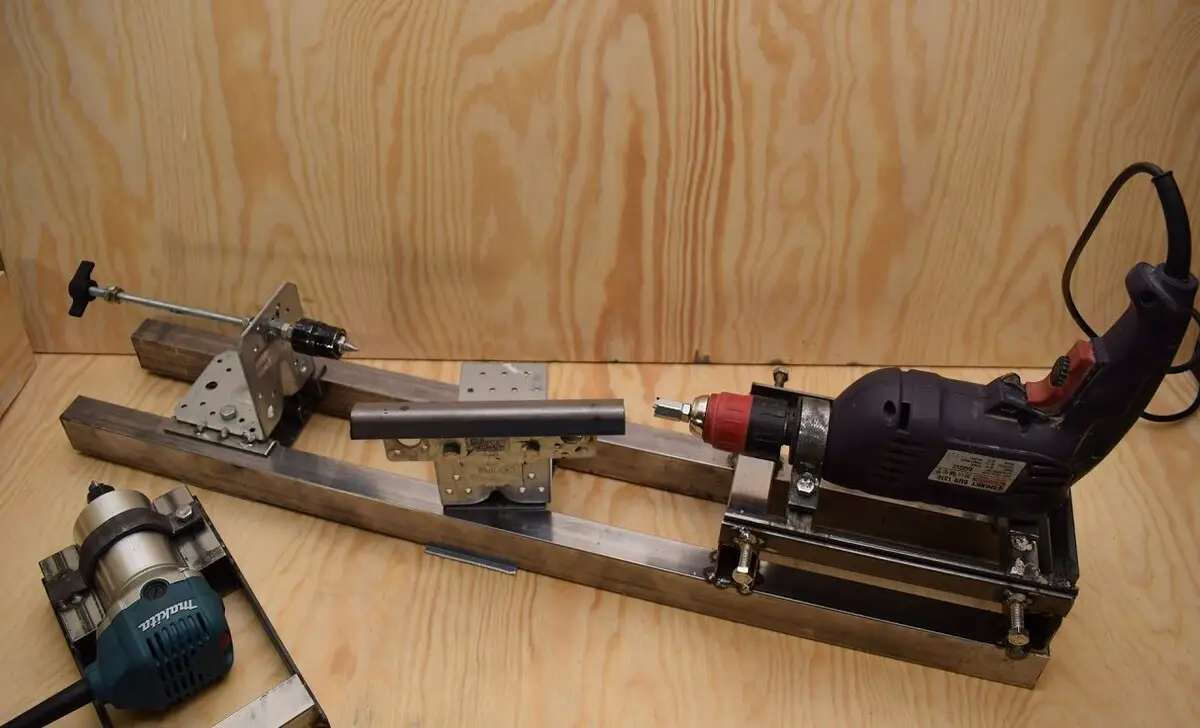
Making a drill lathe at home can be a fun and rewarding DIY project. You can create a lathe for woodworking or metalworking projects with just a few materials and some basic tools. Remember always to prioritize safety when working with power tools. Wear protective gear such as goggles and gloves, and follow all manufacturer instructions for your drill press and any other tools used in this project. With these simple steps, you’ll be well on creating your homemade drill lathe. Here are six easy steps on how to make a drill lathe:
1: Selecting The Right Drill And Lathe Components

When selecting the right drill and lathe components, ensuring compatibility for smooth woodworking operations is crucial. The drill chuck and live centre must be chosen carefully to optimize performance, while relevant lathe accessories like chisels contribute to efficient woodturning. Compatibility between the drill and lathe shafts is essential for seamless operation. By considering these factors, you can ensure that your hand drill and lathe components work together harmoniously, leading to successful woodworking projects.
2: Mounting The Drill Onto The Lathe Base
Securing the hand drill onto the lathe headstock is crucial for safe operation. Aligning the drill chuck with the lathe headstock spindle guarantees seamless rotation while working on your woodworking projects. Ensuring that the lathe base offers ample support for the mounted hand drill is essential to maintain stability throughout the operation. These steps are vital in creating a secure and reliable setup for your DIY drill lathe.
3: Building The Lathe Bed And Tailstock
Constructing a stable lathe bed from plywood forms a reliable foundation for woodturning activities. Including a dependable spur centre on the lathe, the tailstock is crucial for providing secure support to the workpiece during operations. Employing appropriate woodworking techniques when crafting the lathe bed and tailstock ensures precision in the construction process. Integrating these elements contributes to the overall functionality and safety of the DIY drill lathe, enabling woodturning enthusiasts to create intricate and beautiful woodwork with ease.
4: Adding A Tool Rest And Headstock To The Lathe

Enhancing woodworking convenience involves securing the tool rest at an optimal distance from the workpiece. Installing a robust headstock on the lathe enables efficient power transmission during wood turning. Additionally, utilizing the lathe chuck to securely hold the workpiece in place ensures safe and accurate woodturning. This combination of factors contributes to the smooth and precise operation of the homemade drill lathe, providing a satisfying woodworking experience.
5: Aligning The Drill And Lathe Components
It’s important to adjust the lathe chuck to align with the lathe headstock spindle to ensure precise woodturning results. This alignment is crucial for achieving accuracy in woodworking projects. Additionally, aligning the lathe live centre with the workpiece contributes to consistent woodturning results by minimizing vibrations and ensuring smooth turns. Furthermore, aligning the tool rest parallel to the lathe bed is essential for enhancing woodworking precision, allowing smooth and controlled movements while working with the lathe.
6: Testing And Adjusting The Drill Lathe
Ensuring smooth operation and stability is imperative when testing the drill lathe. Any necessary adjustments to the lathe components should be made based on the testing results to ensure optimal functionality. Fine-tuning the lathe accessories, including the tool rest and headstock, is vital in enhancing woodworking accuracy. Thorough testing and adjustments are essential to creating a functional and reliable drill lathe.
Potential Issues And Their Solutions
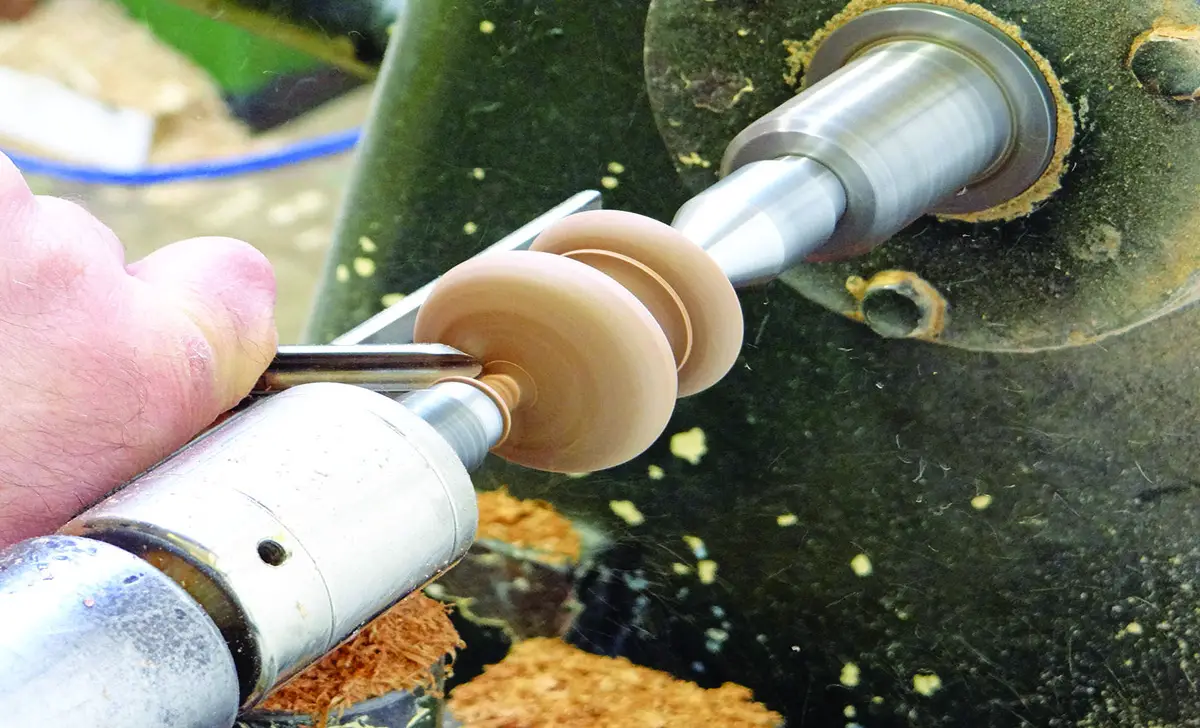
Distilled lathe vibration can disrupt wood turning, impacting the quality and safety of the workpiece. To counter this, ensuring the lathe chuck is securely fastened to the spindle can stabilize the workpiece during wood turning, minimizing the risk of injuries. Additionally, resolving lathe headstock misalignment is crucial for accurate woodworking results.
This can be addressed by aligning the lathe’s live centre with the workpiece, ensuring consistent and precise woodturning. Overcoming potential issues related to drill lathe vibration and chuck slippage is essential for a seamless woodworking experience, allowing woodturners to create high-quality products with ease and safety.
Would You Recommend Building Your Drill Lathe?
Building your drill lathe at home can be a rewarding and cost-effective DIY project for those who are handy with tools. However, it is important to consider whether it is the right choice for you. Building a drill lathe requires technical skills and knowledge of woodworking or metalworking techniques.
Additionally, purchasing all the necessary materials and components can add cost and time. If you have the necessary skills, resources, and time to dedicate to the project, building your drill lathe can be a fulfilling experience that allows you to customize your machine to fit your needs. However, suppose you are not confident in your abilities or do not have the time and resources to invest. In that case, purchasing a pre-made drill lathe from a reputable manufacturer may be more practical.
Conclusion
Building your drill lathe at home can be a rewarding and cost-effective project for woodworking enthusiasts. By following the step-by-step instructions on making a drill lathe at home, you can create a functional drill lathe using easily accessible materials and tools.
However, it’s important to note that potential issues may arise during the building process. It is recommended to carefully read through the instructions and troubleshoot any problems that may occur. Whether or not you recommend building your own drill lathe depends on your comfort level with DIY projects and your specific woodworking needs. If you’re up for the challenge, try it and enjoy the satisfaction of using a lathe you built yourself.
Frequently Asked Questions
1.Can You Turn A Drill Into A Lathe?
Ans: Yes, it is possible to transform a drill into a lathe with a few modifications. Additional tools like a chuck, tailstock, and tool rest are required. The process involves securely attaching the chuck to the drill and exercising caution while using the drill lathe.
2.Can You Build Your Lathe?
Ans: Yes, it is possible to build your lathe. Basic woodworking and metalworking skills are required. There are various free or paid DIY lathe plans available online. Building your lathe can be cost-effective and provide a sense of achievement.
3.Can You Make A Lathe Out Of A Drill Press?
Ans: It is possible to transform a drill press into a lathe with some modifications. You’ll need to add a tool rest and create a mounting system for your workpiece. Ensure you have the necessary safety equipment and follow step-by-step instructions or seek expert guidance before attempting this project.
4.What Is An Alternative To A Lathe?
Ans: A drill press can be an alternative to a lathe for specific projects. A router can shape and carve wood. Handheld tools like chisels and gouges are suitable for smaller, intricate tasks. However, they may not provide the same precision and capabilities as a lathe.
5.Could This Be Used As A Metal Lathe?
Ans: It is possible to use this machine as a metal lathe with some modifications and adjustments. While it may not be designed specifically for metalworking, it can certainly handle light-duty metal-turning tasks with the right tools and techniques.

